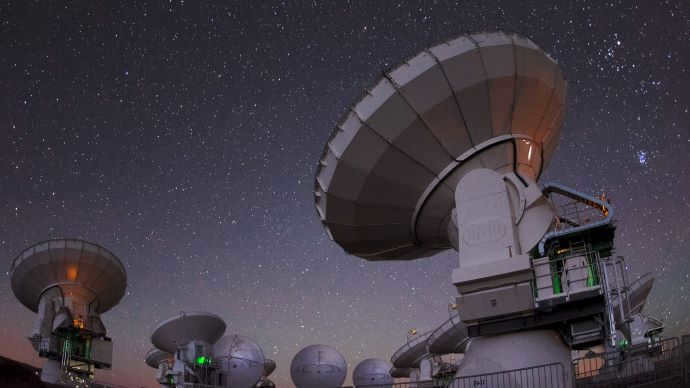
Astronomy is a scientific discipline that encompasses various fields of study, including but not limited to:
- Astrometry;
- Celestial mechanics;
- Theoretical Astronomy;
- Astrophysics;
- Stellar Astronomy;
- Cosmochemistry;
- Cosmogony;
- Cosmology.
Sections related to the study of space objects’ movement in astronomy
Astrometry
Astrometry is responsible for examining the geometry and motion of celestial and cosmic bodies.
The purpose of astrometry is to determine the precise coordinates of space objects and the magnitudes of their velocities within a specific time frame.
The geometry and motion of celestial objects are determined by the following astronomical measurements:
- The length of the equatorial celestial arc (direct equatorial ascension);
- The angular distance from the celestial equatorial plane (direct equatorial declination);
- Equatorial velocity in direct ascension;
- Equatorial velocity in direct declination;
- Change in the observed object (parallax);
- Radial (line-of-sight) velocities.

Seek assistance from your instructors
If precise observations are conducted, it is possible to acquire additional information regarding the celestial object:
- Absolute compatibility;
- Presence of satellites;
- Mass and age of the celestial body;
- Location;
- Class.
Astrometry is the field of study that furnishes other branches of astronomy with the vital data required for their advancement.
Astrodynamics
Astrodynamics is a branch of astronomy that applies the principles and equations of classical mechanics to analyze and predict the trajectory of celestial objects within the solar system, as well as the phenomena related to their motion.
Astrodynamics adheres to the principles established by Sir Isaac Newton:
- The principle of force states that when an object is subjected to a force, its motion will be accelerated. The magnitude of the acceleration is directly proportional to the magnitude of the force applied. However, the acceleration experienced by objects with different masses will vary. Specifically, the greater the mass of an object, the less it will accelerate for the same amount of force applied. In summary, acceleration is directly proportional to the applied force and inversely proportional to the mass of the object.
- The law of opposition states that when two objects interact with each other, they experience forces that have the same magnitude but opposite direction.
- If two bodies in a system interact with each other with equal forces, they will both experience acceleration that is inversely proportional to their masses.
- The center of mass, which is located on the line connecting the two objects, will have zero acceleration and its distance from the objects will be inversely proportional to their masses.
- This point is known as the center of mass and in astronomy, the motion of double stars revolves around this center of mass.
Theoretical astronomy
The field of theoretical astronomy focuses on analyzing the motion of two celestial bodies within a system, using the principles outlined in the law of universal gravitation. In this discipline, calculations are made without considering any external influences or factors that may have a minimal impact on the bodies involved. For instance, while all the planets in our solar system experience gravitational forces from their neighboring planets, these forces are considered insignificant when compared to the immense gravitational pull of the Sun. As a result, they are often disregarded in calculations.

If you’re having difficulty figuring it out by yourself, you may want to consider seeking assistance from your instructors.
Astronomy is the study of celestial bodies and phenomena in the universe.
Astronomy is one of the oldest scientific disciplines. Ancient civilizations, including the Babylonians, Greeks, Indians, Egyptians, Nubians, Iranians, and Chinese, conducted systematic observations of the night sky. Throughout history, astronomy encompassed various fields such as astrometry, celestial navigation, and observational astronomy, but it is now commonly referred to as astrophysics in professional settings.
Astronomers and stargazers are the individuals who engage in the study of astronomy. This field of science allows ordinary people to actively contribute to the exploration and observation of diverse celestial phenomena.

Astronomy is distinct from astrology, which is a pseudoscience that makes predictions about human destiny by observing the orbits of stars and planets.
Fields of study within astronomy
- Astrobiology explores the origins and evolution of biological systems in the Universe.
- Astrophysics investigates the density, temperature, and chemical composition of stars, as well as the formation and evolution of galaxies, the properties of interstellar space, and phenomena such as black holes.
- Astrometry and spherical astronomy analyze the orbits of celestial bodies in space, their changes, and establish the coordinate system and kinematics of celestial bodies.
- Cosmology examines the origins and development of the universe.
- Galactic astronomy focuses on examining the arrangement and constituents of our very own Galaxy, known as the Milky Way.
- Celestial mechanics is concerned with investigating the movement of celestial bodies as influenced by various forces.
- Planetary science entails the study of the planets within our solar system.
- Stellar astronomy delves into the exploration of stars.
Classification based on research
Up until now, scientists have primarily gathered astronomical data by studying electromagnetic waves or subatomic particles such as electrons, protons, and neutrinos. The field of astronomy is commonly categorized according to the specific portion of the electromagnetic spectrum being observed:
- Optical Astronomy: This branch of astronomy focuses on studying the visible part of the electromagnetic spectrum, which is within the range of wavelengths from $400$ nm to $800$ nm, and can be detected by the human eye.
- Infrared astronomy: Infrared astronomy involves the study of the infrared part of the electromagnetic spectrum, which spans wavelengths from $700$ nm to $1$ mm.
- Radio astronomy: Researchers in this field use instruments similar to radio and TV antennas to investigate the centimeter and millimeter range of electromagnetic waves, with wavelengths ranging from $30$ cm to $1$ mm.
- X-ray astronomy – (wavelengths $5$ nm-$10$ nm)
- Ultraviolet astronomy – (wavelengths $380$ nm-$10$ nm>
- Gamma-ray astronomy
Observations of optical and radio waves can be made from the Earth’s surface, but the study of high-energy waves can only be done from space or from the upper atmosphere using airplanes or balloons. This is because the atmosphere is too dense for short wavelength electromagnetic waves.
Amateur Astronomy
Astronomy is a field that offers a unique opportunity for amateurs to make significant contributions. Amateur astronomers play a crucial role in observing a diverse range of celestial objects and phenomena. They often use self-built equipment to explore and study the wonders of the universe. Popular targets for amateur astronomers include the Moon, planets, stars, comets, meteor showers, as well as deep space objects like star clusters, galaxies, and nebulae. Another fascinating aspect of amateur astronomy is astrophotography, where enthusiasts capture stunning images of the night sky.
Being one of the oldest and most captivating scientific disciplines, astronomy allows humanity to delve into the mysteries of the cosmos. Astronomers not only study the present state of celestial bodies but also explore their distant past. The knowledge gained through these studies enables scientists to make scientific predictions about the future of the universe as a whole.
What is the field of astronomy?
Astronomy explores the entirety of the universe along with its individual components such as stars, comets, planets, constellations, and galaxies. Moreover, astronomers dedicate their efforts to investigating black holes, nebulae, and the celestial coordinate system.
Astronomy’s relationship with other scientific disciplines
Astronomy shares a strong bond with various other fields of study. Mathematics, physics, chemistry, geography, biology, mechanics, and radio electronics are just a few examples of the sciences that modern astronomers heavily rely on. The knowledge acquired through the study of these subjects undoubtedly enhances one’s understanding of astronomy as a whole.
In order to conduct astronomical research and calculate the coordinates and trajectories of celestial bodies, one must possess knowledge in mathematics and geography. The understanding of chemistry is essential in order to determine the chemical composition of celestial luminaries and explain the chemical processes that occur in outer space. Additionally, physics is indispensable in comprehending the physical processes that take place in stars and studying the shapes of celestial bodies. Linguistics is helpful in studying the meanings and origins of constellation, star, and planet names. Radio electronics and mechanics are useful in learning how to use a telescope, understanding its structure, and conducting research in space. Biology provides insight into how sunlight affects all living organisms on the planet. Lastly, history takes us back to the distant past and aids in understanding the origins of celestial bodies, as well as introducing us to ancient astronomers.
The Scale of the Universe
Modern scientific research has demonstrated that the universe possesses definite boundaries. Scientists quantify its size in terms of light-years, estimating it to be approximately 45.7 billion. To put this into perspective, if we were to equate one light-year to 10 trillion kilometers, the sheer enormity of the universe becomes truly mind-boggling.
The Diverse Entities that Inhabit the Universe
The universe is teeming with an array of celestial bodies, often referred to as cosmic entities. These entities come in various sizes, ranging from the minuscule to the colossal. Meteorites, asteroids, and comets are classified as the smaller celestial bodies found within the universe. Scientists are continuously delving into the study of these celestial entities, and their latest discovery is the largest body ever found in the universe: the star UY Scuti. With a radius 1700 times greater than that of the Sun, it truly dwarfs any other known celestial body.
Asteroids are chunks of rock that compose the asteroid belt, which lies between the orbits of Jupiter and Mars. These celestial bodies come in various shapes and sizes, with diameters ranging from 30 meters to tens of kilometers. To date, scientists have identified over 97,853,768 of these extraterrestrial entities. Asteroids move in orbit around the Sun.
Meteoroids are solid celestial bodies that are larger than an atom but smaller than asteroids. They can be either primary objects or fragments of space objects, not limited to asteroids. Celestial bodies that enter the atmosphere are known as meteors. These can include fragments from comets or asteroids.
A meteorite is the part of a meteoroid that reaches the Earth’s surface. In other words, it is any cosmic body that falls onto the surface of another celestial object.
When meteorites fall, they leave behind a trace in the form of a crater. The largest known crater, Wilkes, has a diameter of 500 km.
Planets are large spherical objects that orbit the Sun on a specific axis and are not satellites of another celestial body. The solar system consists of eight planets:
- Mercury;
- Venus;
- Earth;
- Mars;
- Jupiter;
- Saturn;
- Uranus;
- Neptune.
Types of Telescopes: Terrestrial and Space Telescopes
A telescope is a specialized instrument used for observing objects in space. Its primary function is to gather as much light as possible from a celestial body and increase the angle at which that celestial body can be studied. The amount of light collected by a telescope is directly proportional to the size of its lens. Therefore, a larger lens allows for the observation of smaller objects.
The scientist Galileo Galilei is credited with inventing the first telescope in 1609. Although the basic principle of its operation was similar to other telescopes of the time, Galileo used more advanced lenses that allowed for a 20x magnification of the image. This groundbreaking device played a crucial role in making significant discoveries about the universe. Today, the original telescope is preserved in a museum in Florence.
While ground-based telescopes are capable of observing the Sun, planets, and satellites, they are limited in their ability to study stars in great detail. Even the most powerful instruments only reveal stars as tiny flickering dots.
Orbiting space telescopes provide a unique opportunity to explore the cosmos and gain a deeper understanding of the Universe. These incredible instruments play a vital role in unraveling the history of our universe. The inaugural space telescope was launched in August 1957, capturing a highly detailed image of the Sun at an altitude of 25 km.
Contemporary space and ground-based telescopes are equipped with advanced computer software. This technology enables the transmission of images to a monitor, allowing researchers to observe the universe without any distortions.
Typically, telescopes are installed in remote locations away from the hustle and bustle of the city. Mountainous regions or vast deserts are ideal for this purpose. Some of the largest telescopes in the world include:
- FAST – the largest ground-based telescope on the planet. It has a diameter of 500 meters and is situated in China. This telescope is designed for studying the entire cosmos and searching for extraterrestrial intelligence.
- Arecibo is one of the largest observatories housing a 305-meter diameter telescope. It is located in Puerto Rico and is used for studying planets and the Sun.
- The Effelsberg Radio Telescope is another instrument with a diameter of approximately 100 meters. It is situated in the western part of Germany.
- The B. Lovell Radio Telescope, which was named after its creator, was built in the mid-20th century and has a diameter of 76 meters.
- The largest telescope in Russia, known as the Big Telescope Alt-Azimuthal (BTA), is situated in the mountains of Karachay-Cherkessia at an elevation of 2070 meters. It boasts a 6-meter mirror.
All-Wave Astronomy
Initially, early astronomers relied solely on optical telescopes to investigate the mysteries of the universe. As a result, their understanding was limited to what their eyes could perceive directly. However, modern astronomy has made tremendous advancements thanks to the ability to observe celestial objects across different wavelengths. This breakthrough has led to the emergence of entirely new fields within the discipline, including gamma-ray astronomy, radio astronomy, and X-ray astronomy.
Every celestial object emits a series of undetectable waves that can be quantified using specialized equipment. The importance of these measurements cannot be overstated. For instance, the detection of gamma or X-ray radiation originating from space provides invaluable insights into the colossal phenomena occurring in the furthest reaches of the Universe. Due to the vast distances involved, direct visual examination of all cosmic entities is impossible for humans. Thus, our understanding of the cosmos heavily relies on the radiation emitted by celestial bodies. This radiation allows us to determine various properties of objects in the universe, including their distance, composition, age, size, and more.
The origins of domestic space exploration can be traced back to the mid-20th century. In 1946, the establishment of Experimental Design Bureau No. 1 marked the beginning of efforts to develop satellites, launch vehicles, and ballistic missiles. A decade later, the bureau successfully designed its first carrier rocket, which was instrumental in launching Earth’s first artificial satellite into orbit.
The launch of this artificial satellite marked a turning point in the development of space exploration. Shortly thereafter, another satellite was sent into space, but this time it carried a living being – a dog by the name of Laika.
Thanks to the launches of interplanetary stations, the Moon has been extensively studied. In 1959, a spacecraft successfully landed on the surface of our planet’s satellite, allowing the Soviet Union to capture images of the previously unexplored back side of the Moon. This groundbreaking achievement enabled scientists to carefully examine and name the various landforms on this mysterious celestial body.
One of the most notable accomplishments during this time was the first-ever photograph taken of the back side of the Moon. This image provided invaluable insights into the lunar landscape and paved the way for further exploration.
From that point on, until 1991, the field of domestic cosmonautics was filled with numerous exciting discoveries and remarkable achievements.
The Inauguration of the Initial Man-Made Satellite
October 4, 1957 marked a momentous occasion in the realm of global space exploration. It was on this day that the world witnessed the launch of the very first man-made satellite. This landmark event served as the genesis for the exploration of outer space, unleashing fresh possibilities not just for domestic, but also global space exploration.
The Baikonur Cosmodrome, situated in Kazakhstan, served as the launch site for this groundbreaking satellite. The R-7 launch vehicle was employed for this groundbreaking mission. The satellite remained in orbit for a span of 92 days, completing 1440 revolutions around the Earth, thereby granting scientists their first-ever opportunity to delve into the upper layers of the ionosphere. This endeavor also yielded crucial insights into the functionality of equipment in outer space conditions, and validated various calculations.
The Initial Man-Made Satellite of the Earth
Advancements in Contemporary Space Exploration
The field of modern cosmonautics has experienced a tremendous leap forward in its progress. Nowadays, space is no longer viewed as a distant and fantastical concept, but rather as a tangible reality. The launch of cutting-edge spacecraft and journeys into outer space have become relatively commonplace, albeit costly, occurrences in the realm of Russian affairs.
The notion of space tourism no longer elicits surprise, as individuals now have the opportunity to embark on a spaceship voyage for a specified fee. Furthermore, space research is being conducted at an elevated level. Contemporary scientists are actively engaged in the development of solar power plants and the creation of technologies that can impact the Earth’s climate.
Russia’s primary objective lies in the continual advancement of domestic cosmonautics, as well as the exploration of the capabilities of the modern space industry, with the intention of positioning it at the forefront of the global stage.
Ancient humans must have often looked up at the sky and wondered about the motionless “fireflies” that were scattered across it. As they observed these celestial objects, they began to associate them with various natural phenomena, such as the changing of seasons. These celestial objects were believed to possess magical properties, and in ancient Egypt, the flooding of the Nile coincided with the appearance of the brightest star, Sirius (known as Sotis to the Egyptians). As a result, the Egyptians developed a calendar known as the “Sotic” year, which was based on the interval between the two appearances of Sirius in the sky. The Sotic year was divided into 12 months, each consisting of 30 days. The remaining 5 days, which totaled 365 days in a year, were designated as holidays.
The Babylonians achieved notable advancements in the field of astronomy (as well as astrology). Their mathematical system was based on a 60-curve number system (in contrast to our decimal system, as if the ancient Babylonians had 60 fingers), which had a significant impact on the way time and angular units were represented. Instead of the standard 100 minutes in an hour, the Babylonians used 60 minutes. Similarly, 1 degree was divided into 60 minutes, and the entire celestial sphere was divided into 360 degrees (not 1000!). Additionally, it was the Babylonians who established the zodiac on the celestial sphere.
The celestial sphere is a hypothetical sphere with an arbitrary radius that is used to solve various astrometric problems by projecting the celestial luminaries onto it. Typically, the center of the celestial sphere is considered to be the observer’s eye. For an observer on Earth’s surface, the rotation of the celestial sphere replicates the daily movement of the luminaries in the sky.
The ancient Babylonians were aware of seven “planets” – the Sun, Moon, Mercury, Venus, Mars, Jupiter, and Saturn. They were likely the ones who introduced the seven-day week, dedicating each day to a specific celestial luminary. Additionally, the Babylonians developed the ability to predict eclipses, which the priests cleverly used to enhance the common people’s belief in their supposed supernatural powers.
What can we observe in the sky?
To begin with, let’s establish our “Universal Address” (applicable to citizens of Russia):
- country: Russia
- planet: Earth
- solar system: Solar
- galaxy: Milky Way
- galactic group: Local group
- galactic cluster: Virgo supergroup
- Multigalactics
- Our Universe
You and I reside on one of eight expansive planets that revolve around the Sun. The Sun, being a star, possesses a significant size that allows for the occurrence of thermonuclear reactions, resulting in a vast amount of energy.
A planet is a celestial body with a spherical shape and sufficient mass to be molded by gravity, yet lacking the capacity for these aforementioned reactions. There exist only eight main planets:
With the exception of Mercury and Venus, all planets have satellites, which are essentially smaller “planets” that orbit around the larger planet. Earth is one such planet with its own satellite, the Moon, whose stunning surface is depicted in the initial image.
Additionally, the Solar System is home to dwarf planets, which are small, nearly spherical bodies that are not satellites of larger planets and are unable to “clear” their path in the Solar System due to their lack of mass. Currently, there are 5 known dwarf planets, with Pluto being considered a large planet for over 70 years:
Moreover, there are also minuscule celestial bodies in the Solar System that share a similar composition to planets – asteroids. These asteroids are primarily found in the main asteroid belt, located between Mars and Jupiter.
Furthermore, comets are present in the Solar System. These “tail stars,” as they were believed to be by ancient civilizations, are predominantly composed of ice and possess a large and magnificent tail. One notable comet, the Hale-Bopp comet (named after Hale and Bopp), was visible in the sky to many Earth dwellers in 1997.
The Galaxy of Milk
However, our solar system is just one of many planetary systems within the Milky Way galaxy. A galaxy is a vast collection of stars and other celestial bodies that orbit around a common center of mass due to the force of gravity (a visual representation of a galaxy can be seen in the image on the left). The size of a galaxy in comparison to our own solar system is truly immense, spanning about 100,000 light years. In other words, it would take a beam of light, traveling at the fastest speed possible in the universe, a hundred thousand years to journey from one end of the galaxy to the other. It is truly awe-inspiring to gaze up at the night sky and contemplate the stars, as we are essentially peering deep into the past. The light that reaches us now originated long before the existence of humankind, and even before the birth of planet Earth, emitted by countless stars scattered throughout the galaxy.
Astronomy serves a purpose by lifting us beyond our own existence; it serves a purpose by its grandeur; it serves a purpose by its beauty. It is through astronomy that we realize how insignificant humans are in terms of their physical presence, yet how immense they are in terms of their spirit.
Henri Poincaré
What is the meaning of astronomy?
Astronomy is the scientific discipline that explores the vastness of the universe. Specifically, it investigates the motion, arrangement, and structure of celestial entities. Moreover, it delves into the examination of the origin and evolution of celestial bodies and systems. Simply put, astronomy focuses on the exploration of outer space, planets, and other astronomical objects.
The principles of astronomy are founded on the observation and exploration of the surrounding cosmos.

The Origin of Astronomy
Astronomy was first conceptualized in ancient Greece, during the time when Pythagoras and Aristotle began their studies of the universe.
The word “astronomy” is believed to have originated from the ancient Greek words “astrom,” meaning star, and “nomos,” meaning law. This translates to “stellar law” or “law of the stars.”

The Scope of Astronomy
Astronomy encompasses the vast expanse of the universe, including all its celestial objects and systems.
One may wonder, what are the specific objects and phenomena that fall under the study of astronomy? Naturally, these include stars, planets, meteors, and comets. Additionally, astronomy investigates galaxies, nebulae, and everything that exists in outer space.
To put it simply, the domain of astronomy is space itself.
When was the birth of science?
Astronomy, in fact, predates all other sciences and stands as one of the oldest. While it is difficult to pinpoint an exact date for the emergence of astronomy, it can be traced back to ancient times, around the 3rd to 2nd centuries BC. The study of the surrounding world became necessary for our ancestors in order to survive and navigate their surroundings. It also played a crucial role in developing principles of agriculture and timekeeping. This knowledge permeated various aspects of human activity, from basic necessities such as food and clothing to the expansion of horizons and the satisfaction of curiosity.

Hipparchus is widely recognized as the pioneer of scientific exploration. He was among the earliest scientists to meticulously observe and analyze the movements of the sun and moon, effectively describing their behavior. Additionally, Hipparchus devised a system for categorizing stars into six distinct classes based on their luminosity, a classification that remains relevant in modern astronomy.
Just like any other field of study, astronomy has its own set of goals and objectives.
Currently, there are three main tasks that astronomers focus on:
1) investigating the positions and movements of celestial bodies, as well as determining their shapes and sizes;
2) exploring the structure and composition of celestial bodies;
3) studying the formation, evolution, and future of celestial bodies.
In the past, astronomy relied more on philosophical ideas. However, with advancements in technology, it has become a more precise and scientific discipline. Nowadays, astronomy is closely intertwined with mathematics, physics, chemistry, and biology. Of course, philosophy still plays a significant role in the foundations of astronomy.
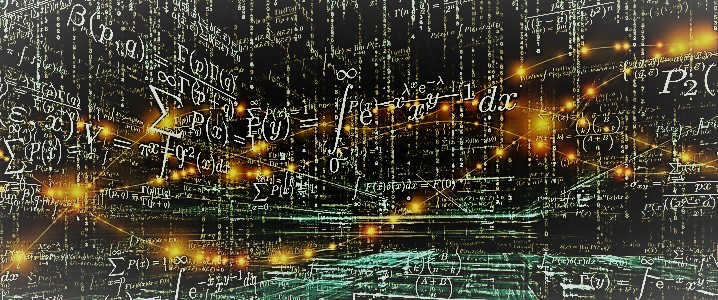
What is the primary goal of astronomy? It is likely that you have already realized it.
The fundamental science we have mentioned is dedicated to the study and exploration of the phenomena and objects in the vast expanse of the Universe. Naturally, this is done in order to comprehend the very essence of the cosmos. To comprehend its structure and unique characteristics.
Humanity yearns to unravel the mysteries and enigmas of the cosmos. Scientists strive to unravel the origin of everything. Furthermore, everyone is eager to uncover what lies ahead in the future. To unveil the truth and obtain an accurate portrayal of the world.
Thanks to the field of astronomy, we have already acquired a vast amount of knowledge. Moving forward, it is undeniably certain that there is an abundance of new discoveries on the horizon. As advancements in technology and research continue to propel us forward, there is no doubt that the realm of science will continue to flourish and evolve.
Until then, farewell and see you in the near future!

As we gaze at the twinkling stars on a balmy summer evening, each of us ponders – what lies beyond, how is it all structured, and what is our place in the vast Universe? Contemplations of the transience of earthly existence and the vastness of cosmic existence, musings on the grand and the minuscule, envisioning the night sky as a black velvet adorned with milk-like drops of stars, and the anticipation of clouds during the day… These thoughts are poetic, but scientists approach the starry sky with a different lens. The findings of their astronomical research continue to astound. So, what exactly does the field of astronomy entail? And what purpose does it serve?
Astronomy is a field of scientific inquiry that explores the makeup of the cosmos. It investigates the positioning, movement, physical composition, genesis, and development of celestial entities and systems. Astronomy also delves into the fundamental characteristics of the surrounding universe. In particular, it focuses on the study of the Sun and other stars, planets and their moons, black holes, galaxies and nebulae, quasars, asteroids, and beyond. By unraveling the enigmatic phenomena occurring in the universe, astronomy seeks to shed light on our existence.
What was the origin of Astronomy?
It can be stated that the field of astronomy came into existence when humans started pondering upon the composition of our universe. Initially, the notions about the cosmos were quite elementary, stemming from religious beliefs. As early as the 6th or 4th century BC, individuals began to examine the stars and their movements. As mathematical knowledge and scientific exploration advanced, mankind’s comprehension of the Universe also improved. The first major breakthrough in astronomy occurred around 1500 BC, giving rise to spherical astronomy, precise calendars, and subsequently astrometry. The Babylonian priests who constructed astronomical tables, the calendars of the Maya tribes, and the knowledge passed down from Ancient China and Ancient Egypt all played crucial roles in the early stages of astronomy. Ancient Greek scholars, most notably Pythagoras, were the first to propose that the Earth is spherical, while Aristarchus of Samos suggested that the Earth revolves around the Sun. The geocentric theory of the universe emerged as the primary achievement during this period. Galileo made a significant contribution to the advancement of astronomy.
Since the introduction of telescopes, scientists have made the remarkable discovery of the Milky Way, followed by the exploration of numerous other galactic regions. Advancements in astronomy have been exponential since the early 20th century. The most significant accomplishment of contemporary scientists has been the formulation of the theory of the universe’s evolution, which posits that it expands continuously over time.
What are the components of astronomy?
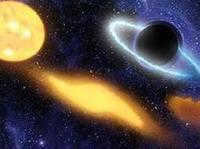
Astronomy, currently, encompasses several branches:
- Astrometry, which focuses on the motion and positions of cosmic objects.
- Celestial Mechanics, which determines the mass and shape of stars and studies the laws governing their movements under gravitational forces.
- Theoretical astronomy, where scientists develop computer and analytical models of celestial bodies and phenomena.
- Astrophysics, which investigates the physical and chemical properties of cosmic objects.
- Archaeoastronomy, which delves into the history of astronomy and explores the astronomical knowledge of ancient civilizations.
Additionally, there are branches that explore the spatial arrangement of stars and planets, as well as the evolution of celestial bodies.
Astronomy is built on the foundation of observation

Astronomical experiments are not feasible, unlike those in physics. The majority of knowledge about celestial objects is acquired through the utilization of electromagnetic radiation.
The observation of the cosmos is an intricate and lengthy undertaking, demanding attentiveness, consistency, and focus. Consequently, the application of meters and kilometers as units of measurement in astronomy is impracticable.
In astronomy, methods that are utilized in other disciplines such as mathematics and physics are extensively employed. The vastness of space allows for the existence of matter at extreme temperatures ranging from hundreds of millions of degrees to near absolute zero, as well as in the vacuum void and within neutron stars. Furthermore, the advancements made in the field of astronomy have also found applications in diverse areas such as geology, biology, geography, and history.
The Fascination of Astronomy as a Pastime
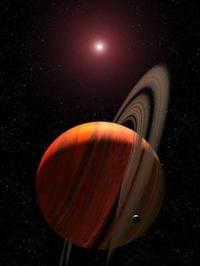
The field of astronomy and astronautics has long been a source of fascination for countless individuals. The global community of amateur astronomers is vast and their contributions have often led to significant astronomical breakthroughs. One notable example is the discovery made by Australian Anthony Wesley in 2009 while observing Jupiter. Wesley identified evidence of a celestial object impacting the planet, with speculation suggesting it may have been a comet.
Nowadays, there is a vast array of top-notch scientific videos available that explore the realm of space, showcasing an assortment of stars, planets, and galaxies. These videos are meticulously crafted, featuring stunning graphics and authentic footage captured from outer space. They are sure to captivate your interest and enhance your understanding of the captivating field of astronomy. Take a look at a selection of these remarkable films below.
Author: Tatiana Sidorova, update date: 15.03.2018
Reprinting without an active link is strictly prohibited!
This ancient discipline emerged to aid humanity in navigating through time and space (calendars, geographical maps, navigation devices were created based on astronomical knowledge), as well as to forecast various natural phenomena that are somehow connected with the movements of celestial objects. Contemporary astronomy encompasses multiple branches.
Spherical astronomy employs mathematical techniques to examine the apparent position and movement of the Sun, Moon, stars, planets, satellites, including man-made objects, on the celestial sphere. This branch of astronomy is closely linked with the development of the theoretical foundations of time measurement.
Practical astronomy involves the understanding of astronomical instruments and the methods used to determine time, geographic coordinates, and directions based on astronomical observations. Its main purpose is to serve practical needs and it can be categorized into three types depending on its application: aeronautical, geodetic, and nautical.
Astrophysics, on the other hand, focuses on the physical and chemical characteristics of celestial bodies and their systems, as well as the environments and processes that occur within them. While it is a branch of astronomy, it is further divided into various sections based on the specific objects of study, such as the physics of planets, natural satellites, the Sun, interstellar medium, stellar atmospheres, internal structure, and evolution of stars, and interstellar medium, among others.
Celestial mechanics is the field of study that focuses on the movement of celestial bodies within the solar system, including comets and man-made satellites orbiting the Earth under the influence of gravity. This branch of astronomy also involves the compilation of ephemerides, which are tables that provide the positions of celestial objects at specific times.
Astrometry is a branch of astronomy that deals with the measurement of the coordinates of celestial objects and the study of the Earth’s rotation. It involves accurately determining the positions and motions of stars, planets, and other celestial bodies.
Stellar astronomy is the branch of astronomy that explores stellar systems, such as star clusters and galaxies. It involves studying the composition, structure, dynamics, and evolution of these systems.
Extragalactic astronomy focuses on the study of celestial bodies that exist beyond our own galaxy, including other galaxies, quasars, and other extremely distant objects. It involves investigating the properties, structures, and formation processes of these objects.
Cosmogony is the branch of astronomy that investigates the origin and development of cosmic bodies and their systems. It encompasses the study of the entire solar system, as well as individual planets, stars, and galaxies. The goal is to understand how these celestial bodies form and evolve over time.
Astrology does not focus on any of the aforementioned subjects, and most of the astronomical information is irrelevant to an astrologer. Similarly, an astronomer does not need to have an understanding of astrology and has no reason to engage in discussions on this topic, as it falls outside their area of interest and expertise. However, there is still a place for astronomy on an astrological website. It provides the essential minimum of astronomical data that astrologers rely on, as well as information that may be of interest to anyone curious about astrology.
Aries Zodiac Sign
The Taurus Zodiac Sign
Gemini zodiac sign
Neoplastic disease
Leo
Leo, the king of the jungle, is a majestic creature who exudes power and grace. With his golden mane and piercing eyes, he commands respect from all who encounter him. His roar, loud and thunderous, echoes through the savannah, declaring his dominance over his territory.
Leo is not just a symbol of strength, but also a symbol of leadership. As the leader of his pride, he guides and protects his family with unwavering devotion. He ensures their safety and well-being, always putting their needs above his own.
But beneath his regal exterior, Leo is also a gentle and loving soul. He shares tender moments with his cubs, playing and teaching them the ways of the wild. He is patient and understanding, nurturing their growth and instilling in them the values of loyalty and resilience.
In the vast and unpredictable wilderness, Leo is a symbol of stability and order. He maintains a delicate balance in his ecosystem, keeping the population of prey and predators in check. His presence is vital to the health and sustainability of his habitat.
Leo’s significance extends beyond the animal kingdom. Throughout history, he has been revered and celebrated in various cultures and mythologies. From the ancient Egyptians who saw him as a divine symbol of power, to the Greeks who associated him with the sun god Zeus, Leo has left an indelible mark on human civilization.
In conclusion, Leo is a remarkable creature who embodies strength, leadership, and love. His majestic presence and unwavering devotion make him an inspiration to all who encounter him. Whether in the wild or in our imaginations, Leo will forever be a symbol of power and grace.
Virgo
can be paraphrased as follows:
People born under the zodiac sign of Virgo
.
Libra
Rephrase the text to make it unique, using the English language and preserving the HTML markup:
Libra
Scorpio
can be rephrased as
Scorpion
.
Sagittarius
Sagittarius, also known as the Archer, is the ninth astrological sign in the zodiac. People born between November 22 and December 21 fall under this fire sign. Sagittarius is ruled by the planet Jupiter, which is associated with growth, expansion, and good fortune.
Those born under the sign of Sagittarius are known for their optimistic and adventurous nature. They have a strong desire for freedom and independence and are always seeking new experiences and knowledge. Sagittarians are natural explorers and are often drawn to travel and adventure. They have a love for learning and are constantly seeking to expand their horizons.
Sagittarians are also known for their honesty and straightforwardness. They are known to speak their mind and are not afraid to voice their opinions. They have a strong sense of justice and fairness and are often seen fighting for the rights of others.
In relationships, Sagittarians are known for their fun-loving and adventurous nature. They enjoy the thrill of the chase and often have many admirers. However, they can also be commitment-phobic and may struggle with settling down.
Overall, Sagittarius is a sign of optimism, adventure, and growth. Those born under this sign are driven by a desire for freedom and are always seeking new experiences. They have a love for learning and possess a strong sense of justice.
Capricorn
Rephrase the text, making it unique, using the English language and preserving the HTML markup:
Capricorn
Aquarius
can be rephrased as
The Water Bearer
.
Pisces
Aquarius is the eleventh astrological sign in the Zodiac, originating from the constellation Aquarius. It spans the 300-330th degree of the zodiac, between 305.25 and 332.75 degree of celestial longitude. Under the tropical zodiac, the Sun is in the Aquarius sign between about January 20 and about February 18, while under the sidereal Zodiac, the sun is in Aquarius from approximately February 15 to March 14, depending on the leap year.



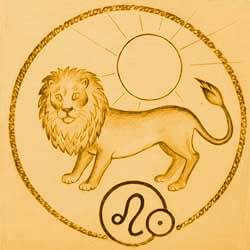







Astrological predictions



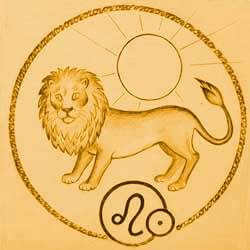







Alphabetical List of Site Headings
Advertisement section by Nikolai Rutsky’s web studio
We specialize in creating unique and captivating websites for cities like St. Petersburg, Moscow, Novosibirsk, Yekaterinburg, and other locations. Our team is experienced in optimizing and promoting astrological websites, as well as providing modernization and redesign services for existing sites. We also offer a range of web services catered specifically to astrologers and parapsychologists in Russia.

When gazing at the celestial sky on a balmy summer evening, each individual ponders over the mysteries of the universe, contemplating its inner workings and pondering their place within it. These thoughts encompass the fragility of human existence juxtaposed with the boundless cosmic expanse, the grandeur and minuteness of it all. To some, the night sky resembles a black velvet canvas adorned with droplets of milk, while others anticipate the presence of clouds during daylight hours. However, scientists approach the starry expanse with a different perspective entirely. Their investigations yield increasingly astonishing discoveries time and time again. So, what exactly is the purpose of the scientific discipline known as astronomy? And why does it hold such significance?
What is the subject matter of Astronomy?
Astronomy is a field of scientific study that focuses on examining the structure and properties of the universe. It investigates the celestial bodies and systems, including their location, motion, physical characteristics, origin, and evolution. Moreover, astronomy explores the fundamental properties of the universe that surrounds us. Specifically, it delves into the characteristics of the Sun, stars, planets, moons, black holes, galaxies, nebulae, quasars, asteroids, and more. The objective of astronomy is to unravel the enigmatic phenomena occurring in the universe and shed light on the intricacies of our existence.
What was the emergence time of Astronomy?
Since the invention of telescopes, scientists have made groundbreaking discoveries in the field of astronomy. One of the most significant findings was the identification of the Milky Way galaxy, followed by the exploration of numerous other galactic spaces. However, it was not until the early 20th century that astronomy truly flourished and experienced rapid advancements.
One of the most remarkable achievements of modern scientists was the formulation of the theory of the universe’s evolution. According to this theory, the universe undergoes expansion as time progresses, marking a significant milestone in our understanding of the cosmos.
What are the components of astronomy?

Astronomy, known as the study of the universe, encompasses various branches:
- Astrometry: This field focuses on analyzing the motion and arrangement of celestial objects.
- Celestial mechanics: It investigates the mass and shape of stars and explores the laws that govern their movement under gravitational forces.
- Theoretical astronomy: Theoretical scientists develop computer and analytical models to understand the behavior of celestial bodies and phenomena.
- Astrophysics: It delves into the physical and chemical properties of cosmic objects.
- Archaeoastronomy: This branch examines the history of astronomy and seeks to uncover the astronomical knowledge possessed by ancient civilizations.
Astronomy is founded on the practice of observing celestial objects

Astronomical experiments cannot be conducted in the same way as physicists can. The majority of the knowledge astronomers possess regarding celestial objects is acquired through the use of electromagnetic radiation.
The study of the Universe is an intricate and time-consuming endeavor that demands attentiveness, consistency, and focus. Hence, it is simply impracticable to employ units of measurement such as meters and kilometers in the field of astronomy.
When studying the solar system, scientists often use the astronomical unit (AU) as a unit of measurement. The AU represents the size of the Earth’s orbit, specifically its major semi-axis, and is equal to approximately 149 million kilometers. In the field of stellar astronomy and cosmology, larger units of length are required. One such unit is the light-year (ly), which measures the distance that light travels in a vacuum over the course of one Earth year. It is approximately equal to 9.5-1015 meters. Another unit commonly used in these fields is the parsec (pc), which is historically associated with measuring distances to stars based on their parallax. One parsec is equivalent to 3.263 light-years, 206,265 AU, or 3.086-1016 meters.
Techniques utilized in other fields like mathematics and physics are also extensively employed in the realm of astronomy. The expanse of space is the sole setting where matter can subsist at temperatures ranging from hundreds of millions of degrees Celsius to near absolute zero, within the void of vacuum and even within neutron stars. In more recent times, the progress made in astronomy has found practical applications in the fields of geology, biology, geography, and history.

Astronomy and astronautics have always been a source of fascination for numerous individuals. The global community of amateur astronomers is virtually immeasurable, as they have frequently played a crucial role in making significant astronomical breakthroughs. For instance, in 2009, Anthony Wesley, an Australian enthusiast observing Jupiter, detected evidence of a celestial body’s impact on the planet, potentially indicating a comet.
Astronomy enables us to comprehend the laws of nature and witness the gradual development of our universe. It significantly shapes people’s worldview. In the early 21st century, space-related subjects such as galaxies and extraterrestrial life have gained popularity, although regrettably, many discussions surrounding these topics are often misguided. The interest of ill-informed journalists and unverified claims made by scientists can lead many individuals to believe in pseudoscientific discoveries.
Nowadays, there is an abundance of top-notch scientific videos available on the web that delve into the captivating realm of space exploration. These videos showcase stunning visuals and authentic footage captured from the vast expanse of the cosmos, leaving viewers in awe and offering a deeper understanding of the captivating field of astronomy. Feel free to explore a selection of these captivating films below.
Author: Tatiana Sidorova, update date: 15.03.2018
Reprinting without an active link is prohibited!
Astronomy, which is the study of the origin, structure, properties, and location of celestial bodies and the systems they form, is a fascinating scientific field.
Within the realm of astronomy, there is a focus on investigating planets, asteroids, stars, comets, nebulae, black holes, and galaxies. The primary goals of astronomy include:
- Unraveling the movements of celestial bodies and searching for patterns within these movements;
- Examining the chemical and physical properties of space objects;
- Constructing models to understand the internal structure of planets and stars;
- Studying the overall characteristics of the Universe.
Observation is the primary scientific method in the field of experiments, practical experiments, and physical and chemical studies in space, as they are extremely challenging to conduct. Through years and even centuries of observation, scientists draw conclusions, analyze data, and make comparisons.
Attention! Plagiarism in your work can lead to serious consequences, including expulsion. If you are unable to write the content yourself, consider placing an order here.
The primary components of astronomy
Astronomy encompasses various independent fields. A modern classification distinguishes between two primary types:
- Fields centered on the observation of celestial bodies.
- Fields focused on the examination of celestial objects’ structure.
The first category comprises astrometry, theoretical astronomy, astrophysics, and celestial mechanics. The second category includes cosmochemistry, cosmology, stellar astronomy, and cosmogony.
It’s worth noting that astrology, a well-known discipline, is not regarded as one of the sections of astronomy. Astrology is not a scientific field but rather a collection of predictive and descriptive practices, beliefs, and traditions associated with the alleged influence of celestial objects on individuals.
Overview of the subjects studied
Each branch of astronomy focuses on a specific area of research:
- Astrometry is concerned with determining the precise coordinates and velocity of celestial bodies in outer space;
- Theoretical astronomy is responsible for identifying and characterizing the components of celestial orbits, as well as creating tables of temporal and spatial coordinates;
- Astrophysics explores the structure, physical properties, and chemical composition of celestial bodies;
- Celestial mechanics calculates the trajectories of space objects using the principles and laws of classical mechanics;
- Cosmochemistry investigates the laws governing the formation and development of cosmic matter;
- Cosmology encompasses the study of the major and minor laws governing the evolution of the universe.
- Stellar astronomy explores the patterns in the structure and composition of stellar systems and subsystems;
- Cosmogony investigates the transformations in the contemporary Universe, seeking answers to inquiries about its inception.
Despite the distinct delineation of these fields, the amalgamation of both is essential for the continuous expansion of astronomical knowledge. Moreover, astronomy and its branches are intricately connected with other scientific disciplines, such as chemistry, geography, mathematics, geophysics, biology, and ecology.
In the past, astronomers solely relied on basic observational tools, namely telescopes. However, modern scientists utilize sophisticated analyzing and light-receiving devices, as well as laboratory and demonstration equipment, counting and solving machines, and microphotometers. Nowadays, methods of mathematical modeling and digital data processing technologies hold immense significance.
Astronomy is a scientific discipline that encompasses several subfields:
- Astrometry;
- Celestial mechanics;
- Theoretical Astronomy;
- Astrophysics;
- Stellar Astronomy;
- Cosmochemistry;
- Cosmogony;
- Cosmology.
Sections related to studying the movement of objects in space
Astrometry
Astrometry is concerned with examining the shape and motion of celestial and cosmic bodies.
The goal of astrometry is to determine the precise coordinates of objects in space and the magnitude and direction of their velocities over a specific time period.
The shape and motion of celestial objects are described by the following astronomical measurements:
- The length of the equatorial arc (right ascension)
- The angular distance from the celestial equatorial plane (declination)
- Velocity in right ascension
- Velocity in declination
- Change in position from different perspectives (parallax)
- Radial velocity
If precise observations are conducted, it is possible to gather additional information about the celestial object:
- Absolute agreement;
- Existence of satellites;
- Mass and age of the celestial body;
- Position;
- Classification.
Astrometry is the scientific discipline that supplies the essential data to propel other branches of astronomy forward.
Study of Celestial Bodies in Motion
Celestial mechanics, a branch of astronomy, applies the principles of classical mechanics to analyze and predict the movement of celestial objects within our solar system. It also investigates events associated with the motion of these celestial bodies.
The field of celestial mechanics adheres to Newton’s laws:
- The Law of Inertia states that in a reference frame with zero acceleration and no external forces, objects will either stay at rest or move in a straight and uniform motion. An external force is required to give an object motion, deceleration, or change its velocity vector. When a force is applied, objects experience acceleration. If a celestial object is accelerating, it means that it is being influenced by an external force. For instance, when a planet moves in a curved orbit, it always experiences centripetal (normal) acceleration because it is constantly under the influence of gravitational force. Celestial mechanics aims to establish the relationship between gravitational force and the trajectory of a celestial object.
- The principle of force states that when a force is exerted on an object, its motion will be accelerated. The magnitude of the acceleration is directly proportional to the applied force. Furthermore, objects with different masses will experience varying degrees of acceleration under the same force. Specifically, the greater the mass of an object, the less it will be accelerated. In summary, acceleration is directly related to the force acting on the object and inversely related to its mass.
Astronomy in theory
This field of study examines the relative motion within a system consisting of two celestial bodies, based on the principles of universal gravitation. In this analysis, any external factors that may affect these bodies are either absent or too negligible to be considered in calculations. For instance, while the gravitational forces exerted by neighboring planets do impact all the planets in the solar system, these forces are so minor compared to the gravitational pull of the Sun that they are often disregarded.
If you’re having difficulty comprehending this topic on your own, consider seeking guidance from your professors.
Feel free to ask your professors for assistance if you’re struggling to understand.
Furthermore, theoretical astronomy focuses on deducing the constituents of celestial bodies’ trajectories using extensive and prolonged observations. Moreover, ephemerides, which are compilations of spatial and temporal coordinates for objects observed from Earth, are created based on the already analyzed orbital elements.
Figure #1. Astrometry. Scales of cosmic distances
Astrophysics
Astrophysics focuses on studying the unique chemical composition and physical structure of celestial bodies, as well as their overall makeup.
Astrophysics is divided into two main branches: theoretical and observational.
Some of the key observational techniques used in astrophysics include:
In order to conduct research in astrophysics, scientists utilize various analytical tools and computer modeling techniques to investigate a wide range of astrophysical phenomena, develop models, and provide theoretical explanations.
Sections dedicated to the astronomical examination of the composition of celestial bodies
Astronomy of Stars
This field focuses on the investigation of the patterns of star distribution throughout the universe, as well as their motion.
Cosmic Chemistry
Cosmic chemistry encompasses the chemical makeup of celestial bodies, the laws governing the distribution and arrangement of chemical elements in space, and the processes involved in the formation of matter.
A primary focus within the field of cosmic chemistry is the exploration of the history and origin of cosmic objects based on their chemical properties.
The branch of astronomy that explores and examines the beginning and progression of celestial entities, such as stars, planets and satellites, nebulae, galaxies, asteroids, comets, meteorites, and black holes.
Cosmology
Cosmology is a field of astronomical study that focuses on topics pertaining to the investigation of universal structure and the development of the universe.
Unable to find the information you are looking for?
Place an order for the relevant material on our service. Submit an assignment – our system will automatically dispatch it within 59 seconds. Select the appropriate specialist who will spare you the trouble of studying.
All tasks are completed directly, so you will be pleasantly surprised by our prices.
Revisions and consultations are included in the price
These services are provided free of charge within the scope of the assignment and will be completed within the agreed timeframe.
We offer a money-back guarantee for unfulfilled assignments
If the specialist fails to deliver, we guarantee a 100% refund.
Technical support available 7 days a week
Our managers are available on weekends and holidays to promptly address your inquiries.
Thousands of verified experts at your disposal
Our Money-Back Guarantee
Did the expert receive payment without completing the work? Not an issue with us!
Your funds are securely held in your balance throughout the duration of the assignment and the warranty period.
In the event that something goes wrong, we assure you a full refund of the amount paid.
Astronomy, as a scientific discipline, focuses on the study of celestial objects like stars, planets, comets, and galaxies.
It encompasses the examination of phenomena that occur beyond the Earth’s atmosphere, such as cosmic background radiation. As one of the oldest sciences, it prioritizes the investigation of evolution, physics, chemistry, meteorology, and the motion of celestial bodies, as well as the origins and development of the universe.
Therefore, the invention of the telescope predates the recognition of astronomy as a modern science.
Throughout history, astronomy has encompassed a range of disciplines including astrometry, astronomy, astronomical observations, calendar creation, and even astrology. However, in modern times, professional astronomy is akin to astrophysics (Redd, 2012).
Since the 20th century, the field of professional astronomy has been divided into different branches: one responsible for observing celestial bodies and another responsible for analyzing the theories that stem from their study.
One of the most extensively studied stars is the Sun, a typical main-sequence dwarf star classified as G2 V, with an age of approximately 4.6 billion years.
While the Sun is not considered a variable star, it does undergo periodic changes in activity known as the sunspot cycle.
Categories of astronomy
Astronomy is divided into two main categories: observational astronomy and theoretical astronomy.
Observational astronomy involves gathering and analyzing data using fundamental physical principles. Theoretical astronomy, on the other hand, focuses on creating computerized analytical models to describe celestial objects and phenomena.
These two branches of astronomy work together harmoniously, with theoretical astronomy providing explanations for the findings of observational astronomy.
Similarly, observational astronomy serves to confirm the results of theoretical astronomy (Physics, 2015).
Astronomy Through Observation
Observational astronomy is a branch of the science that specifically concentrates on the direct examination of stars, planets, galaxies, and other celestial entities within the vast universe.
This particular field of astronomy utilizes telescopes, although the earliest astronomers made their observations without any technological assistance.
The initial astronomers formed the basis for the modern constellations by carefully studying the night sky. Through their observations, they were able to identify the five planets of our solar system (Mercury, Venus, Mars, Jupiter, and Saturn) and propose the constellations that exist today.
Modern telescopes, including reflectors and refractors, were subsequently developed to provide a more detailed view of the celestial objects that can be seen with the naked eye (California, 2002).
Astronomy: Theoretical Approach
The field of theoretical astronomy offers a unique perspective by allowing us to delve into the complex evolution of celestial systems.
Unlike many other scientific disciplines, astronomers face a hurdle in that they cannot directly witness the complete lifespan of any given system, from its inception to its demise. The formation of planets, stars, and galaxies took place over millions, if not billions, of years.
As a result, astronomers must rely on images of celestial bodies at various stages of development to piece together the story of their origin, growth, and ultimate fate.
Hence, theoretical astronomy intertwines with observation as it heavily depends on the collection of data necessary to construct accurate simulations.
Fields of research
The study of the universe is divided into various areas of research, which provide scientists with opportunities to specialize in specific celestial objects and phenomena.
Investigations into planets, the Sun, and stars
These branches of astronomy focus on examining the development, evolution, and demise of celestial bodies.
Consequently, planetary astronomy concentrates on the study of planets, solar astronomy explores the intricacies of the Sun, and stellar astronomy delves into the mysteries surrounding stars, black holes, nebulae, white dwarfs, and supernovae, which represent the final stages of stellar life.
Study of Our Galaxy: Galactic Astronomy
The area of astronomy known as galactic astronomy specifically focuses on investigating our very own galaxy, the Milky Way. Conversely, extragalactic astronomers dedicate their efforts to exploring all that exists beyond our galaxy in order to discern the processes of star formation, transformation, and ultimate demise.
Understanding the Universe: Cosmology
Cosmology delves into the comprehensive understanding of the universe, encompassing its tumultuous inception (the Big Bang), its ongoing evolution, and its ultimate demise.
Astronomy traditionally concerns itself with localized phenomena and observable entities. However, cosmology typically delves into the grand-scale characteristics of the universe in a more abstract, imperceptible, and often purely theoretical manner.
Astrometry
Astrometry, the oldest branch of astronomy, is dedicated to the precise measurement of celestial bodies such as the Sun, Moon, and planets.
By accurately calculating the motion of these bodies, astrometry has enabled astronomers in other fields to uncover the patterns of planetary and stellar formation and evolution.
As a result, astrometry has played a crucial role in predicting significant celestial events such as eclipses, meteor showers, and the appearance of comets.
In the early days of astronomy, astronomers observed and identified patterns in the sky in an attempt to organize and track celestial movements.
These patterns, known as constellations, not only facilitated astronomical measurements but also helped ancient civilizations in measuring the seasons.
The tracking of stars and other celestial bodies was practiced worldwide, with particular emphasis in regions such as China, Egypt, Greece, Mesopotamia, Central America, and India (Zacharias, 2010).
Nowadays, the majority of astronomical observations are carried out remotely.
This means that telescopes are located either in space or at specific locations on Earth, and astronomers operate them from a computer where they store images and data.
Thanks to advancements in photography, particularly digital photography, astronomers have been able to capture awe-inspiring images of the cosmos not only for scientific research but also to educate the general public about celestial phenomena (Naff, 2006).
Astronomy is a scientific field that examines the structure, composition, and evolution of observable celestial bodies and the universe as a whole.
The study of theoretical astronomy focuses on examining the motion of two celestial bodies in relation to each other, disregarding any interactions with additional bodies due to their relatively weak influence. Researchers analyze these issues based on the principles of the law of universal gravitation.
Characteristics of Terminology
Let’s explore the characteristics of scientific terminology within the context of discipline nomenclature.
In the realm of foreign scientific literature, the discipline addressing these issues is referred to as celestial mechanics. Additionally, the term “dynamic astronomy” is utilized in English scientific literature.
This particular foreign definition (celestial mechanics) was initially introduced by French scientist Laplace in 1798.
Under this designation, Laplace encompassed various astronomical problems, including theories concerning the equilibrium and movement of solid and gaseous bodies that constitute the Solar System (and other similar systems), influenced by gravitational forces.
Consequently, the concepts of theoretical astronomy, celestial mechanics, and dynamical astronomy can be deemed synonymous, signifying that they possess identical meanings.
Available works on a similar topic
However, various authors may have different interpretations of these terms.
According to the most popular viewpoint, theoretical astronomy focuses on studying the motion of real celestial objects and uncovering the natural laws that govern these processes.
On the other hand, celestial mechanics deals with solving hypothetical problems regarding the motion of abstract objects under the influence of idealized forces of nature.
From this perspective, theoretical astronomy is considered a part of natural science, while celestial mechanics is seen as a branch of mathematics, employing mathematical physics methods.
Therefore, due to the mathematical methods employed, celestial mechanics could be referred to as mathematical astronomy.
Today, the Department of Celestial Mechanics, Astrometry and Gravimetry at the Faculty of Physics of Lomonosov Moscow State University offers a specialization in celestial mechanics.
Goals of theoretical astronomy
Through observations, which provide the direction from our planet to the celestial body, the elements of the orbit can be calculated.
The elements of the orbit refer to the corresponding values that describe the size, shape, and location of the orbit in space, as well as the position of the planet in the orbit at any given moment.
The next objective of theoretical astronomy is to calculate and create ephemeris based on known orbit data.
Ephemeris are tables that provide information on the specific moments when a celestial object is located in space and visible in the sky from the perspective of an observer on Earth. In simpler terms, ephemerides are tables that display the celestial coordinates of astronomical objects.
The field of theoretical astronomy also encompasses the theory behind the initial calculations of various phenomena, such as solar and lunar eclipses, along with preliminary calculations of the moon’s occultations of stars and similar events. Additionally, calculations can be based on observations of the orbits of visual double stars.
The orbit of a planet or comet, for instance, can be determined by conducting three observations of its position in the sky. However, this method only yields a preliminary orbit of the celestial object.
In the coming years, the trajectory will be further calibrated using data collected by numerous observers. Consequently, the ultimate trajectory should ideally encompass all observations made of the celestial object.
Additionally, it is imperative to consider perturbations resulting from the gravitational influence of other planets. These perturbations stem from the gravitational pull exerted by other celestial bodies within the solar system, making their calculation a fundamental aspect of celestial mechanics.
Evolution of theoretical astronomy
Let’s explore the characteristics of the initial stages in the evolution of theoretical astronomy.
In 1686, Isaac Newton, a renowned British scientist, devised the first geometric approach to compute the parabolic trajectory. This calculation relied on the law of universal gravitation and data collected by an expert observer.
Newton’s methodology for calculating the parabolic trajectory was incredibly succinct and precise, to the extent that only another British scientist, Edmond Halley, was able to successfully implement it. Consequently, while studying one of the comets, Halley deduced that its path was actually elliptical. Subsequently, this comet was named after him – Halley’s Comet.
Furthermore, Euler made calculations regarding the path that our moon’s satellite follows. To accomplish this, the scientist devised a technique involving the alteration of orbital elements. This approach was later expanded upon and utilized in models for tracking the movement of larger planets during the 19th century. Consequently, this method continues to be employed to this day.
In 1761 and 1771, the German researcher Lambert further refined Euler’s theory to encompass various types of orbits, thereby facilitating the advancement of theoretical astronomy.
In 1778 and 1783, the French scientist Lagrange introduced two analytical methods for determining the trajectory of celestial bodies. Although Lagrange’s conclusions were accurate, they proved challenging to implement in practical applications.
The method for calculating elliptical orbits was developed by the German mathematician Gauss in 1809, building upon Lagrange’s initial analytical approach. Gauss improved the method to make it more practical and convenient for application.
At the same time, another German specialist named Olbers developed his own method for determining parabolic comet orbits, using Lambert’s research as a basis. This method is still in use today.
Therefore, we have examined the development of orbit determination theory, which was founded by the prominent mathematicians of the 18th and early 19th centuries.
Therefore, the scientific ideas of the 18th and early 19th centuries established the groundwork for all contemporary precise natural sciences and formed the fundamental basis upon which the scientific perception of the present-day world is built.
Astronomy stands as one of the most captivating and progressive disciplines. Its purpose is to offer the most comprehensive comprehension of the composition of the environment surrounding us and to elucidate the occurrences that transpire both on Earth and in the encompassing expanse of outer space.
Overview
Astronomy, as a branch of the natural sciences, focuses on the exploration and understanding of celestial bodies. This scientific field delves into the mechanisms that propel these bodies, their structural organization, the origins of their existence, and the evolutionary processes that shape their development. In practical terms, astronomy is closely intertwined with physics, as it involves the investigation of various physical phenomena.
Development of Astronomy
The appearance of Stonehenge and the construction of the Egyptian pharaohs’ pyramids are evidence of ancient man’s knowledge of astronomy. Stonehenge resembles an observatory, while the pyramids are precisely aligned with the cardinal directions.
Pythagoras was the first to propose hypotheses about the spherical shape of the Earth. The ancient period also saw the emergence of ideas about our planet’s movement around the Sun.
During the Middle Ages, astronomical science was largely forgotten due to the dominance of the religious class in European countries. This period posed a significant challenge to the survival of the entire scientific worldview.
In the 16th century, a major breakthrough occurred with the creation of the heliocentric theory by Polish astronomer N. Copernicus. This theory provided a theoretical foundation for explaining the movement of the Earth and other planets around a central mass – the Sun.
Later, in the 17th century, the invention of the telescope by Galileo allowed mankind to gain insight into the fundamental physical principles governing planetary motion. This led to the emergence of the first hypotheses about the origins of our solar system. Additionally, German scientist I. Kepler discovered the three fundamental laws of celestial mechanics during this time.
With the arrival of spectral analysis and the utilization of photography in the early 19th century, astronomy experienced a significant advancement. This led to the emergence of a new discipline known as astrophysics, which has become one of the most well-developed fields in the realm of astronomical science. Through astrophysics, humanity has gained a deeper understanding of the organization of our galaxy, the various pathways of its evolution, and the initial plausible theories regarding the origins of the universe.
Therefore, it is evident from the succinctly provided historical context what the subject of astronomy encompasses.
Theoretical and practical astronomy
There are two main branches of modern astronomy that can be distinguished from a scientific perspective.
The theoretical aspect of astronomy focuses on developing methods to calculate the motion of celestial bodies based on their apparent positions relative to each other.
On the other hand, practical astronomy is concerned with the application of satellite navigation. It investigates ways to address the issues crucial for the proper functioning of navigational instruments, such as determining precise time and celestial body coordinates.

When we gaze up at the starry night sky on a balmy summer evening, we are filled with questions. What lies beyond? How is everything organized? And where do we fit into the vastness of the universe? These thoughts provoke contemplation on the fragility of our existence on Earth and the immense cosmic realm that surrounds us. We ponder the concept of greatness and smallness, marvel at the velvety blackness of the sky, and see the stars as drops of milk. Yet, during the day, clouds will surely obscure this celestial spectacle. These musings may be poetic, but scientists approach the starry sky with a different mindset. Their research continually reveals astounding discoveries. So, what exactly does the field of astronomy entail, and why is it so essential?
What is the focus of the field of Astronomy?
The field of Astronomy is dedicated to studying the makeup of the universe. It explores the positioning, movement, physical properties, origin, and development of celestial objects and systems. Additionally, Astronomy examines the fundamental characteristics of the surrounding universe. Specifically, this discipline delves into the characteristics of the Sun and other stars, planets and their moons, black holes, galaxies and nebulae, quasars, asteroids, and more. Astronomy serves as a means to comprehend the unfathomable phenomena occurring in the universe and to shed light on our existence.
What was the time of the emergence of Astronomy?
It can be said that astronomy came to be when humans started asking themselves questions about the structure of our world. The initial concepts about the universe were quite primitive and stemmed from religious beliefs. As early as the 6th or 4th century BC, individuals began studying the stars and their movements. As mathematical knowledge and physical research advanced, mankind’s understanding of the universe improved. The first astronomical revolution occurred in 1500 BC, which gave rise to spherical astronomy, accurate calendars, and astrometry. Babylonian priests who compiled astronomical tables, Mayan tribe calendars, and information preserved from Ancient China and Egypt all played a role in the origins of astronomy. Ancient Greek scientists, notably Pythagoras, were the first to propose that the Earth is a sphere, while Aristarchus of Samos suggested that the Earth revolves around the Sun. The geocentric theory of the world emerged as a major accomplishment during this period. Galileo made a significant contribution to the progress of astronomy.
What are the different branches of astronomy?

Astronomy, a field of scientific study focused on the universe, encompasses various disciplines:
- Astrometry, which examines the motion and positions of celestial objects.
- Celestial Mechanics, which determines the mass and shape of stars and investigates their movements influenced by gravitational forces.
- Theoretical astronomy, where scientists develop analytical and computer models to understand celestial bodies and phenomena.
- Astrophysics, which explores the physical and chemical properties of cosmic objects.
- Archaeoastronomy, a field that delves into the historical aspects of astronomy and uncovers ancient knowledge of the cosmos.
Furthermore, there are segments that delve into the patterns of the spatial organization of stars and planets, examining the progression of celestial entities.
Observation forms the foundation of astronomy

Astronomers are unable to conduct experiments like physicists can. The majority of information that astronomers possess about celestial bodies is acquired through the use of electromagnetic radiation.
The act of observing the universe is an immensely intricate and time-consuming procedure that demands attentiveness, consistency, and focus. Consequently, discussing units of measurement such as meters and kilometers in the context of astronomy is impracticable.
Methods commonly utilized in mathematics and physics are also extensively employed in the field of astronomy. The vast expanse of space is the sole realm where matter can endure temperatures reaching hundreds of millions of degrees and near absolute zero, existing amidst the vacuum void and within the confines of neutron stars. In recent times, the progress achieved in astronomy has found practical application in the disciplines of geology, biology, geography, and history.
Engaging in Astronomy as a Personal Pursuit


The field of astronomy and space exploration has long been a subject of fascination for countless individuals. There is a significant community of amateur astronomers around the globe, who have made numerous discoveries in the field. One notable example is the discovery made by Australian Anthony Wesley in 2009, when he observed Jupiter and noticed evidence of a celestial object colliding with the planet, potentially a comet.
Nowadays, there is a vast array of top-notch scientific videos available on the subject of space, encompassing various stars, planets, and galaxies. These videos are meticulously crafted, featuring stunning visuals and authentic footage captured in space. They are bound to captivate your interest and provide a deeper understanding of the captivating field of astronomy. Below, you can find a selection of these exceptional films.





